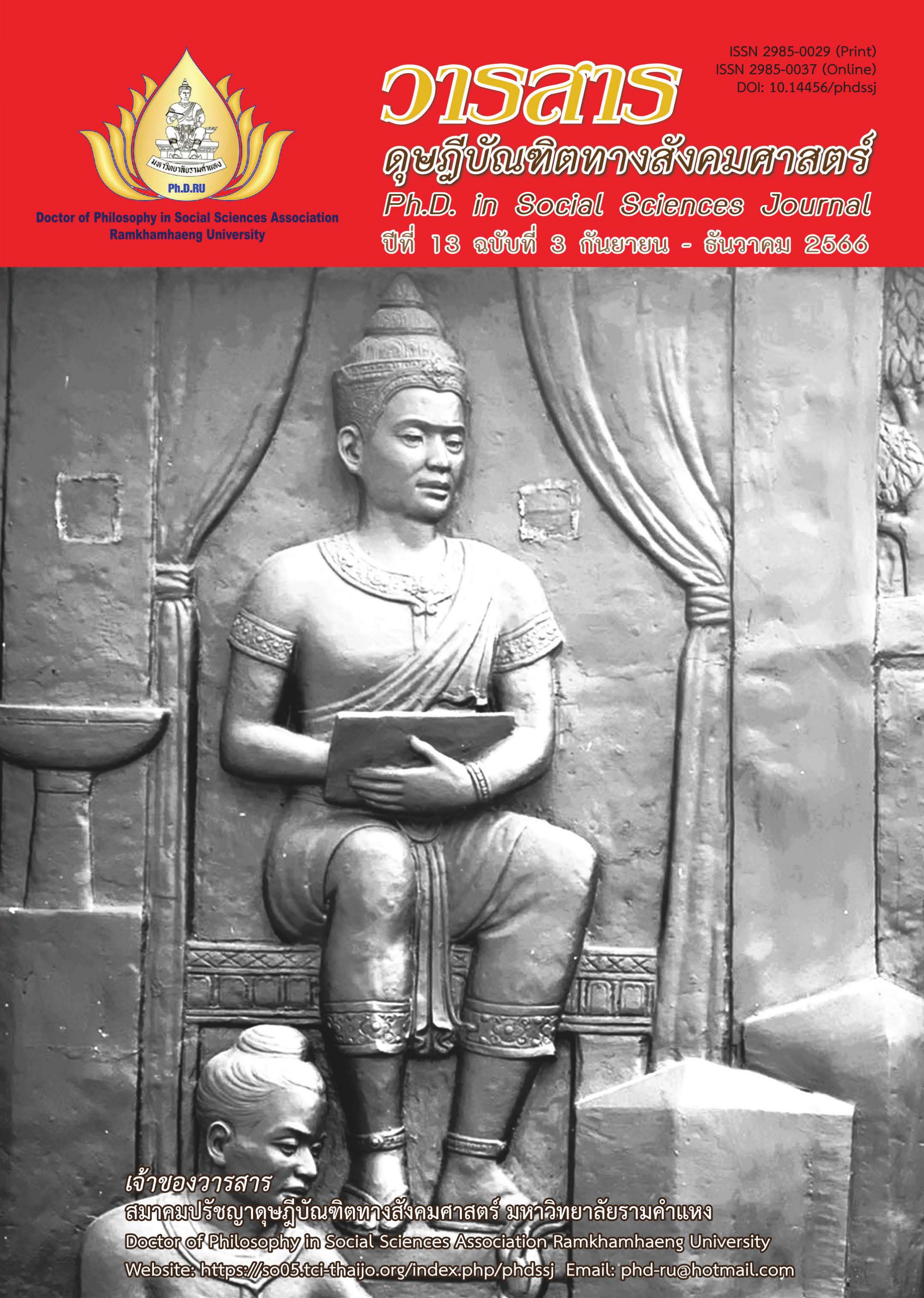Factors Affecting Satisfaction and Decision to Use Non-Invasive Monitoring Service for Coronavirus Disease 2019 (COVID-19) Patients by Exhale Breath Analysis
Main Article Content
Abstract
This research article aims to study the factors affecting the decision to use the service and the satisfaction to use non-invasive monitoring services for Coronavirus 2019 (COVID-19) by exhale breath analysis. The sample of 109 people, the instrument used for data collection was a questionnaire. Descriptive statistics were used for data analysis, including frequency, percentage, mean, standard deviation, maximum value, minimum value and multiple regression analysis statistics.
Findings are as follows: the overall satisfaction of service users was at the highest level of satisfaction with an average of 4.57 and in terms of service areas, they are clean, spacious, and have enough parking spaces with an average of 4.64. Innovation acceptance it is a factor that relates to the decision to use the service and satisfaction. There was a relatively high relationship with service satisfaction 0.686 and a high correlation with service decision 0.870, influencing service decision making and service satisfaction on predictive power was 75% (R2 = 0.75) and 47.00% (R2 = 0.47), respectively. Y1 = 0.020 + 0.041X1 + 0.997X2; R2=0.75, Y2 = 1.243 + 0.091X1 +0.692X2; R2 = 0.47.
Article Details

This work is licensed under a Creative Commons Attribution-NonCommercial-NoDerivatives 4.0 International License.
Academic articles, research articles, and book reviews in the Ph.D. in Social Sciences Journal are author’s opinions, and not the publisher’s, and is not the responsibility of the Ph.D. in Social Sciences Journal Philosophy Association, Ramkhamhaeng University. (In the case that research is done on human, the researcher has to be trained in Ethics for Doing Research on Human Training and has to produce the evidence of the training).
References
Charoenwong, W. (2017). The relationship between risk perception and intention to buy accommodation online in Hat Yai District, Songkhla Province of Thai tourists. Doctoral Dissertation of Business Administration, Prince of Songkhla University. [In Thai]
Jathurongkakul, A., & Jathurongkakul, D. (2006). Consumer behavior. Thammasat University Printing House. [In Thai]
Demirdogen, O., Yaprakli, S., Yilmaz, M. K., & Husain, J. (2010). Customer risk perceptıons of internet bankıng–A study in Turkey. Journal of Applied Business Research, 26(6), 57-68.
Devore, J., & Peck, R. (1993). Statistic: The exploration and analysis of data. Wadsworth.
Dickins, D. (2008). Consumer behavior, decision-making and the adventist educator. Retrieved from https://christintheclassroom.org/vol_37a/37a-cc_141-156.pdf
Kantabutr, S. (2011). The factors related to consumers’ decision on eco-product purchase in Nakhon Ratchasima province. Master’s Independent Study of Business Administration, Rajamangala University of Technology Thanyaburi. [In Thai]
Kitimool, T., & Kunthachai, A. (2021, March). Usage behavior and acceptance of innovative technology affecting the selection of social networking application in Mueang Chiang Rai district, Chiang Rai province. Retrieved from https://rsujournals.rsu.ac.th/index.php/rgrc/article/view/2379/1992 [In Thai]
Khunthong, U., Ananchairachata, N., & Racharak, B. (2020). Factors affecting acceptance of financial technology: A case study of smartphone payment system with Near Field Communication (NFC) technology in consumer shopping in Bangkok. Rajapark Journal, 14(32), 23-36. [In Thai]
Kotler, P., Wong, V., Saunders, J., & Armstrong, G. (2005). Principles of marketing (4th ed.). Prentice Hall.
Krejcie, R. V., & Morgan, D. W. (1970). Determining sample size for research activities. Educational and Psychological Measurement, 30(3), 607-610.
Liljander, V., & Strandvik, T. (1995) The nature of customer relationships. In T. A. Swartz, D. E. Bowen, & S. W. Brown (Eds.), Advances in services marketing and management, vol. 4 (pp. 141-167). JAI Press.
Marriott, H. R., & Williams, M. D. (2018). Exploring consumers perceived risk and trust for mobile shopping: A theoretical framework and empirical study. Journal of Retailing and Consumer Services, 42, 133-146.
Ooi, K. B., & Tan, G. W.-H. (2016). Mobile technology acceptance model: An investigation using mobile users to explore smartphone credit card. Journal of Expert Systems with Applications, 59, 33-46.
Rogers, E. M. (1995). Diffusion of innovations (4th ed.). The Free Press.
Sanont, R. (2016). Causal factors influencing behavioral intent of astrology service users in Thailand. Doctoral Dissertation of Business Administration, Ramkhamhaeng University. [In Thai]
Supina, P. (2017). Perceived risk and high involvement procuct purchase of new customer on e-commerce. Master’s Independent Study of Science, Thammasat University. [In Thai]
Tulanont, S. (2019). Acceptance of technology affecting the decision to buy online products of the elderly. Master’s Thesis of Business Administration, Naresuan University. [In Thai]
Wang, C., Horby, P. W., Hayden, F. G., & Gao, G. F. (2020). A novel coronavirus outbreak of global health concern. The Lancet, 395(10223), 470-473.
World Health Organization. (2021). COVID-19 WHO Thailand situation reports. Retrieved from https://www.who.int/thailand/emergencies/novel-coronavirus-2019/situation-reports
Yudhanusorn, S., & Tapachai, N. (2020). Visiting behavior and marketing satisfaction to the square, NSM Science. Valaya Alongkorn Review, 10(2), 122-130. [In Thai]


